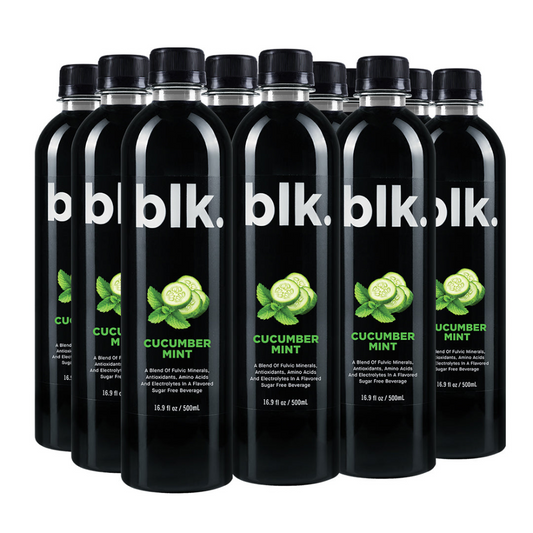
Benefits of Home Exercise and Working Out at Home
This Article Will Guide On:
- The benefits of home exercises
- The benefits of working out at home
- Tips to designing a home workout program
- How to prevent injury during home workouts
Workouts or exercises can help you achieve various goals such as muscle building, weight loss, burning calories, and improving health and well-being.
Going to the gym to work out with the help of a trainer or gym instructor has been the gold standard in the US, and people are gradually shifting to home workouts at a high rate. Home exercises or workouts have the advantage of being convenient and time-saving. Beyond that, you can also design workout routines per your specific need and endurance level.
Going to the gym has its own pros, including ambiance and better equipment. Are you confused about starting your fitness journey from here? Read this blog that shares the real benefits of home workouts and working out at home.
Popular Home Exercises For Overall Fitness
A few examples of home workouts include high-interval training exercises, plyometric exercises, bodyweight workouts, yoga, pilates, and cardio workouts. Most people prefer these home workouts to the gym routine since they are relatively safe, economical, convenient, and do not require much time or equipment. Moreover, they are also proven to be effective in improving the overall fitness of both men and women.
Benefits of Home Exercises and Working Out at Home
Convenience
Home Workouts save you much time that would have been wasted while commuting from home to the gym. It takes you a few minutes at home to get up, prepare and start your workouts. They also let you plan your schedule well and spend as much time as you want on training.
With at-the-gym workouts, there are high chances of making excuses for a short time of workouts for the time being spent traveling. Working out at home helps eliminate such excuses, enabling you to obtain optimal exercise results. Similarly, there is no rush. You do not have a specific time to start and stop your workouts, meaning you can go at your desired pace if you do not let laziness take control.
Economical
Working out at home is also economical and encourages saving more money. With home workouts, you will not pay for a gym membership. You will also not spend so much on purchasing equipment since most home exercises do not require equipment. Should you choose to use home gym machines, you are still covered. Home gym machines are cost-effective and convenient. They offer a variety of workouts, require less space, and are relatively safer.
Flexibility
Workouts from home do not require any gym membership or subscription. This means you can always reschedule if things do not go as planned. Say you fall sick and cannot work out, or you have to take care of an emergency before you start working out; you can do all that with home exercises, unlike going to the gym.
Comfort
There is also the comfort that comes with working out at home. For instance, you can spice up your workouts by playing your favorite music. You can also wear anything you like while working out at home. Your home provides a comfortable environment; it is your haven when you want to work out without distractions from other people. You also do not have to worry about others judging you based on your form, fashion, shape, or fitness level while working from home.
Customization
Home workouts give you the privilege of tailoring your routine and designing your workout program. The advantage is that you can work out based on your schedule, regardless of the time or day. You can incorporate different desired workouts to achieve your workout goals. While working out at home, you will not be restricted to adhering to the availability of gym equipment since you can make a program that contains only equipment-free workouts.
Designing a Home Workout Program
It is important to consider the following when designing your home workout program.
Fitness Goals
You must know your fitness goals before working out at home. The goals would determine the types and intensity of workouts you do. Fitness goals will also help you evaluate your progress.
Make Your Routine Balanced
Your routine should have workouts ranging from moderate to vigorous, depending on your goals. If you seek to build muscles, high-intensity training may help you. Within the distribution of workouts, you should create some time for rest and recovery. You should also know the adequate time required for home workouts to obtain better results.
Cross-Training
Cross-training means incorporating different activities into your workout routine. This helps fix boredom and prevent injuries that may be caused by overusing some muscles or joints. In cross-training, ensure you alternate between activities to stay active and focus on different body parts.
Progress Slowly
If you are a beginner, you should start slowly and progress gradually as your body gets used to the home workouts. This will help you prevent injuries and evaluate your progress. You should note your accomplishments using an app or journal to evaluate your progress.
Create Time for Recovery
Starting to work at home outcomes with the overexcitement of going too fast or too strong. However, this has the danger of causing injuries and muscle soreness. Planning your program to include recovery time will help you obtain maximum results without pain or injury.
Have your Program on Record
Having your program on record helps you stay on track and also provides a point of reference for progress evaluation.
Home Workouts Safety and Injury Prevention
Although working out at home is relatively safe and has numerous other perks, anything can happen at any time. You may suffer workout injuries while working out at home, too, primarily if you use an improper form or posture. High–intensity exercises may also cause injuries. Overtraining due to too much time available while working out at home may also cause injuries.
Common Home Workout Injuries
- Sprains or ligaments injuries due to twists
- Tendon injuries caused by lack of warm-ups
- Back pains due to weightlifting with improper form
- Inflammation
- Knee or hip pains due to overtraining
How to Prevent Home Workouts Injury
Assess your fitness level
Deciding to start working out means that you have some idea of your fitness level. However, assessing your baseline fitness scores can offer benchmarks for measuring progress. You may assess your fitness level by taking your pulse rate before and immediately after a workout, measuring your waist circumference, body mass index, etc.
Warm-up and cool down
Most people make haste during training and fail to warm up or cool down after a workout. Warm-up exercises help prepare your muscles and heart rate for the primary training. They may also help control your breathing and prevent strain. Cool-down exercises also help cool the body, allow for recovery, and slowly help your heart rate return to normal after a workout.
Maintain proper form and posture
A good form and posture will help you train the appropriate muscles and joints and help prevent back pains.
Measure Progress and Rest
Keeping your progress in check enables you to determine whether or not you need to increase the load, volume, or intensity. This will help you prevent overtraining. Resting yourself will allow for recovery, which is essential in preventing further injury. Along with rest, ensure you get enough sleep, and a high protein diet for faster recovery.
Listen to your body
The body can only take as much as it needs; excess is thus harmful. You need to listen to your body as you work out. You should stop and rest when the body feels like it cannot take anymore. Do not push yourself too hard, which may cause inflammation, muscle tears, and joint pains.
Conclusion
Most people are shifting from working out at the gym to working out at home. Working out at home is flexible, customizable, and convenient. Although working out at home has fewer injuries, taking precautions to obtain optimal results is essential.
Frequently Asked Questions
-
Do I need special equipment to work out at home?
-
Can I still achieve my fitness goals without going to the gym?
-
Is it safe to work out at home without a trainer?
-
How often should I work out at home?
-
Can I work out at home with my partner or friends?
-
How can I measure my progress while working out at home?




